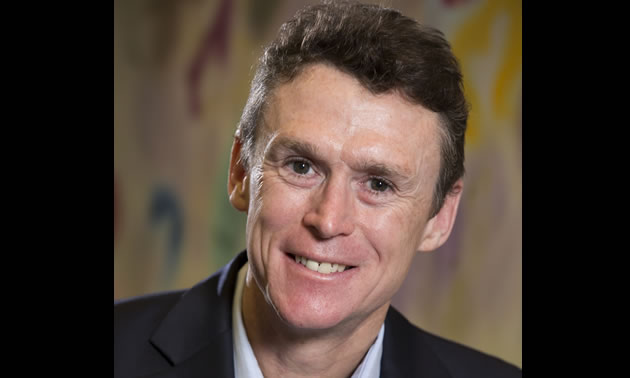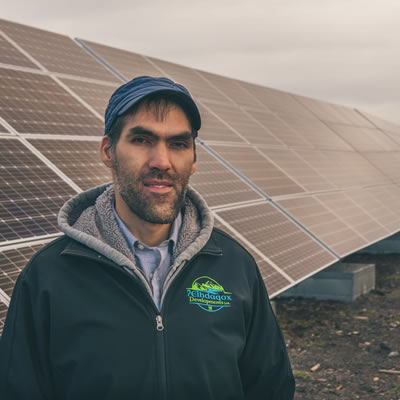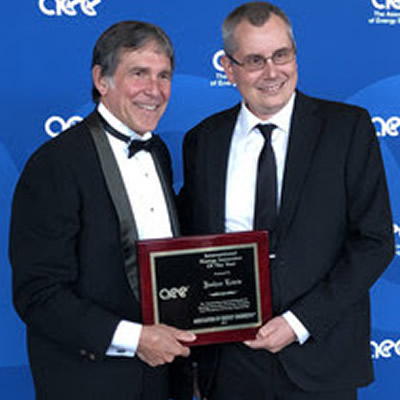Renewable winds blow across Canada
A look at wind energy with 3G Energy

Rob Miller is the Vice-President of Project Development with 3G Energy. — Photo courtesy 3G Energy
Most people know that sustainable resources are necessary, but many still believe that renewables cannot meet energy demands, or are not cost-efficient. Canadian company 3G Energy is working hard to dispel the misconceptions surrounding renewable energy.
Misconceptions of wind power
“The huge misconception is that wind power is expensive,” said Rob Miller, vice-president, Utility Energy Projects, at 3G Energy. “Wind power today, with new technology, the right scale and the right location is six cents per kilowatt hour or less.” A new power plant cannot be built more cost effectively. Plus, “wind gives a province or a town a competitive long-term advantage.”
The social friction around wind farms in particular slowed their implementation into our electricity grids. Many wind projects faced similar challenges of “not in my backyard” from communities across the country. The vocal few outweighed the silent majority of wind advocates with arguments outlining significant health and environmental impacts that have been proven wrong time and again. Wind farms in particular pass lengthy environmental studies to ensure the benefits outweigh any harm.
At the end of the day, completed wind farms in responsibly chosen locations improve habitats with their net benefits. “A wind farm produces clean, green energy, so you don’t emit greenhouse gasses to create a cleaner environment,” Miller said.
Wind and solar with 3G Energy
Graham Findlay and Brian Barr founded the predecessor of 3G Energy in 2001 as Vector Wind Energy Inc. After much success, Canadian Hydro Developers Limited purchased Vector in 2007, so Barr and Findlay went on to create 3G Energy. Barr retired in 2015, leaving Rob Miller and Graham Findlay to operate the renewable company.
Although Miller is not an original founder, he has a long relationship with 3G Energy and Vector. He worked on a contract basis with Vector, and accepted a job as project manager of the Wold Island Wind Farm with Canadian Hydro after it purchased Vector. A few career moves later, Miller returned to work with Findlay at 3G Energy as a partner.
3G Energy is based out of Ottawa, but works with partners on renewable projects across the country. Right now, 3G is working on a prospective development in Saskatchewan for a 150- to 200- megawatt wind farm. He also mentioned meeting with three different First Nations groups in the area about the project.
First Nations focus
Over the years, 3G Energy has worked with First Nations communities across Canada on multiple projects. They find the shared interest in renewables is a good fit. “They want to participate and benefit from renewable energy programs,” Miller said. “There is a real ideological and cultural fit between sustainability, a long-term view, and renewable energy with respect to First Nations.”
Not all the projects are with First Nations, but an active effort to engage is made wherever possible. 3G Energy works to build relationships with the communities. “Sometimes we work together as partners. Sometimes we are engaged by the First Nations to be their developer,” he said. Often, First Nations land is ideally suited for renewable energy developments: close to power grids, but with plenty of open space.
A good example is the four-megawatt Mother Earth Renewable Energy project that Findlay developed working with the M’Chigeeng First Nations on Manitoulin Island in Ontario. 3G Energy consulted in the designing, permitting, contracting, financing and construction processes of the 100 per cent aboriginal-owned site.
The life of an average windfarm
3G Energy offers its clients a wide scope of expertise for both wind and solar energy projects. Company staff all possess strong project management, development and financial skills, as well as mechanical, civil and environmental engineering expertise.
In the case of a wind farm, each project begins with a blueprint. 3G Energy outlines the possibilities of a project. “We start with early stage development from the origination of the idea,” Miller said. They begin to construct a life cycle. “The average wind farm, on the fast side, can take three years, but it typically takes four to 10 years.”
3G Energy completes preliminary feasibility studies, which include feasibility from an engineering perspective, finances and power purchase agreement (PPA) rate. The company reviews capital costs, development costs and equipment costs of the potential wind farm. 3G Energy studies the wind resource to determine if the location is economically viable. This includes installing a test tower for 12 to 24 months.
“After securing a PPA, we start working on the permits and environmental assessments,” Miller said. Simultaneously, they work on contracts and agreements with the local distribution company or transmission company, equipment suppliers and construction contractors.
After receiving approvals, it’s time to finalize and execute construction contracts and find financing. Typically, the project owner or sponsor will contribute 20 per cent of the project cost at this point. “Then you are off to the races,” he said. “A project is de-risked and ready to build.”
The next steps for 3G Energy
3G Energy wants to see the company grow. “We see lots of opportunity that we can pursue,” Miller said. For example, they see a niche in new technologies like combining solar with battery storage. “We want to find large industrial or community loads and help them be a little more autonomous,” he said. “We want to work outside of the large provincial procurements and work directly with the off-takers, and put in place solutions that work economically.” These smaller scale systems eliminate the risk to off-takers of increased energy costs for the foreseeable future.
3G Energy also hopes to expand its work with First Nations to include remote communities across the country. In addition, the company hopes to find opportunities to create cost-effective, sustainable, hybrid systems that remote mines can benefit from—to “deliver solutions that work for everyone.” Traditional mines, that often run on diesel, can benefit from adopting 3G Energy’s hybrid renewable energy solutions.




